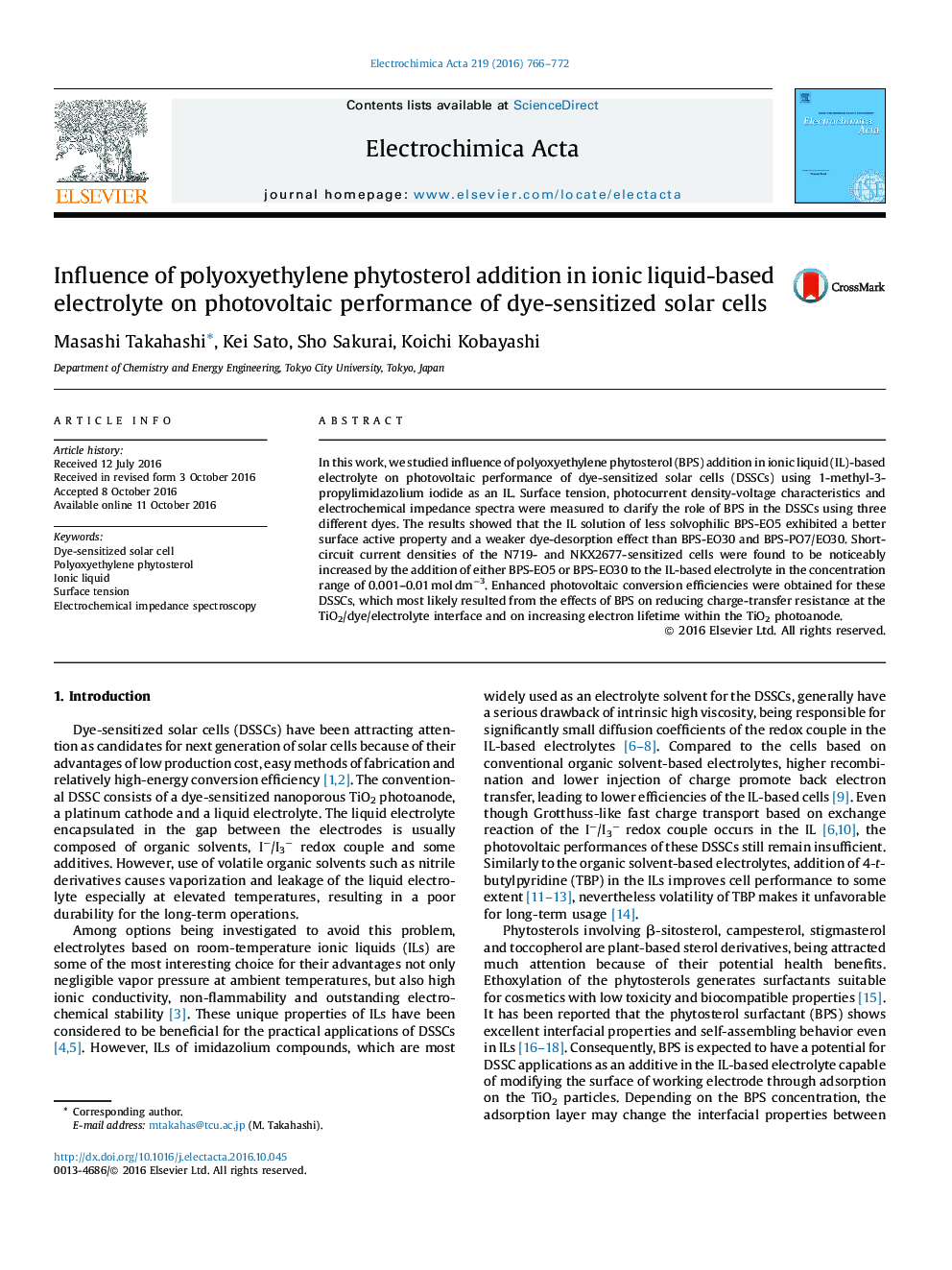| Article ID | Journal | Published Year | Pages | File Type |
|---|---|---|---|---|
| 6473068 | Electrochimica Acta | 2016 | 7 Pages |
â¢The ionic liquid solution of less solvophilic BPS exhibits a better surface active property and a weaker dye-desorption effect.â¢Photovoltaic performances of the N719- and NKX2677-sensitized DSSCs can be improved by the BPS addition to the IL-based electrolyte.â¢BPS added to the electrolyte plays a key role in reducing charge-transfer resistance and increasing electron lifetime in the TiO2 electrode.
In this work, we studied influence of polyoxyethylene phytosterol (BPS) addition in ionic liquid (IL)-based electrolyte on photovoltaic performance of dye-sensitized solar cells (DSSCs) using 1-methyl-3-propylimidazolium iodide as an IL. Surface tension, photocurrent density-voltage characteristics and electrochemical impedance spectra were measured to clarify the role of BPS in the DSSCs using three different dyes. The results showed that the IL solution of less solvophilic BPS-EO5 exhibited a better surface active property and a weaker dye-desorption effect than BPS-EO30 and BPS-PO7/EO30. Short-circuit current densities of the N719- and NKX2677-sensitized cells were found to be noticeably increased by the addition of either BPS-EO5 or BPS-EO30 to the IL-based electrolyte in the concentration range of 0.001-0.01 mol dmâ3. Enhanced photovoltaic conversion efficiencies were obtained for these DSSCs, which most likely resulted from the effects of BPS on reducing charge-transfer resistance at the TiO2/dye/electrolyte interface and on increasing electron lifetime within the TiO2 photoanode.
